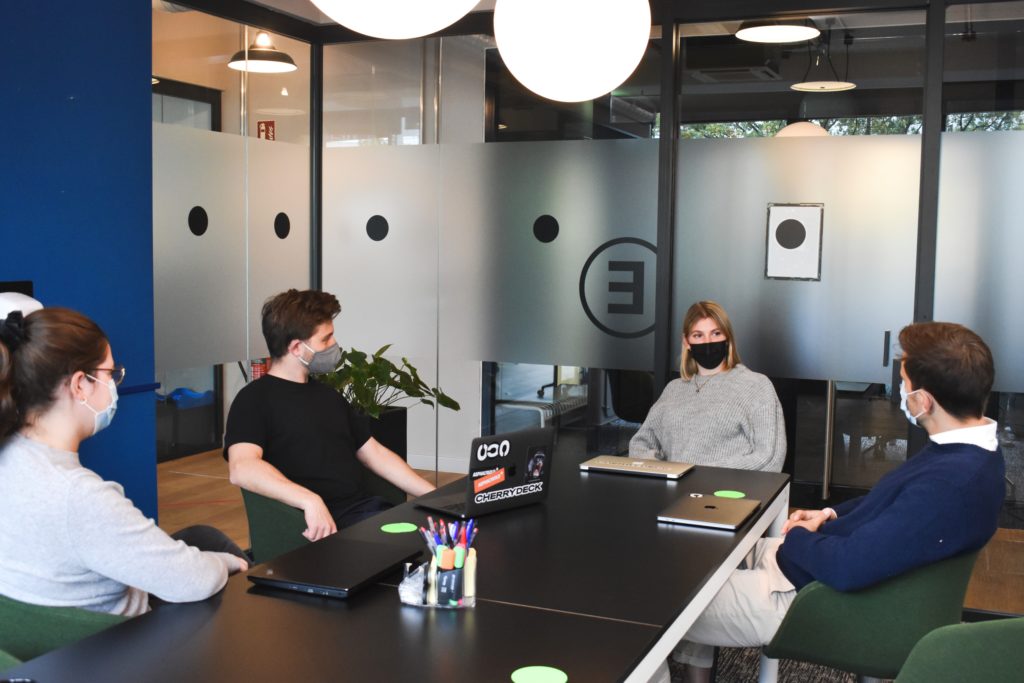We’ve done in-person offices and virtual meetings, and now, it’s time for a variation of both. With vaccination rates on the rise and health restrictions beginning to ease, returning to an in-person work environment is becoming a reality for some and an increasingly likely prospect for most. As many businesses have or are starting to consider back to work for employees, we recommend looking at things from a people perspective. Employees are the #1 stakeholders of any organization – their needs and wishes should always be at the forefront of your decision-making, especially now. The way that your people want to work has changed drastically. You need to better understand these shifts and what they could mean for your organization and your employees.
Beyond the health, safety, and physical aspects of your new work environment, consider what employees want – their fears and expectations. This will vary for the type of workplace your colleagues want: full-time in-person, only virtual, or a hybrid of both. We suggest taking the time to speak one-on-one with as many of your employees as possible and listening carefully to what they have to say. As with any design thinking project, empathizing with users (in this case, the people of your organization) always comes first; people must be understood before their problems can be solved.
We give you a few things to consider when designing the right mid-pandemic workplace for your organization with this outlook in mind.
If your team is staying 100% remote, actively maintaining connections with your colleagues will be crucial. As we’ve all realized during the last year and a half, deteriorating organizational relationships is inevitable without break room chats and body language indications. And with a lack of bonding and empathy, collaboration and productivity are sure to suffer as well. We suggest putting a focus on team building. Though this is not easily done online, our article on How to Host Effective Virtual Sessions and video on Icebreakers & Communication Games will give you an excellent place to start.
Some people may choose to work 1 to 4 days remotely in a hybrid environment while others remain either virtual or in-person. These variations will impact how individuals and teams work and how leaders might form policies to accommodate the diversity of hybrid work. You might also be wondering how you can conduct meetings with half of the attendees in person and half online. How do people virtually want to be accommodated? Even for in-person teams, some organizations require all meetings to have a virtual login option, by Microsoft Teams or Zoom, for instance, regardless of whether or not people will actually be joining remotely.
As you plan to face these challenges, we suggest that you regularly ask yourself: how would remote participants feel? Would your current plans allow them to engage in the meeting fully? What aspects can you improve from their perspective? As they will not be physically in the meeting room, it will be easy for virtual colleagues to be demoted to second-class attendees. Make sure you give their point of view the attention it deserves. The HBR has recently put together some great tips on what it takes to run a great hybrid meeting that focuses particularly on designing for virtual participants.
Now, let’s not forget that we’ve been through all these issues before with a slightly different medium. Think back to teleconference days – many of the same challenges and how we can handle them are similar. When meetings over the phone became the norm, challenges like getting distracted, communication without visual cues, and unavoidable technical difficulties had to be faced. And so, technology was upgraded to work seamlessly, and we learned to do things like solicit feedback and check-in with everyone with our words. No issue was insurmountable; in fact, teleconferencing presented opportunities, such as a rise in globalization and newfound confidence to those with performance anxiety.
Again, opportunities are presented now. Remote, in-person, and hybrid workplaces will become defining characteristics of organizations and a large deciding factor in where people choose to work. There will be a shift towards selecting both the organization people work for and the team they work with based on the team’s approach – in-person, all remote or hybrid – and location. People who want to work at home will likely want to work in a team that works mostly from home, and people who are tired of staring at the same four walls every day will look for teams working in person. The variations in types of workplaces will change the way people think about work; consider this as you build out your corporate and team policies and agreements.
Once organizations figure out what their people need, it’s time to figure out what a mid-pandemic work environment means for their clients and customers. How are they facing the issue? What does this mean for your organization? And what possibilities does this provide to meet any unmet or unarticulated needs?
All in all, there are two key things to remember: continue to leverage empathy with your colleagues and stay open to opportunities.
“Bad companies are destroyed by crisis. Good companies survive them. Great companies are improved by them.” -Andy Grove
To learn more about how design thinking can help you design your back-to-work strategy, contact info@spring2innovation.com.
